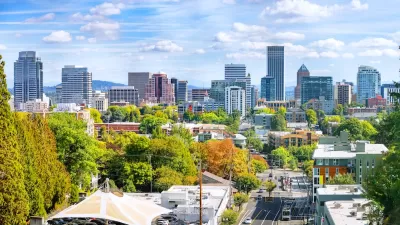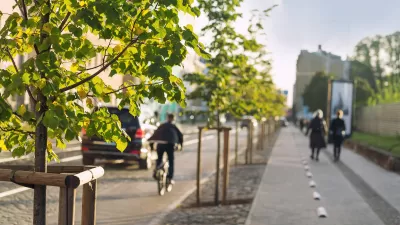Former University of Hawaii professor Tom Dinell makes a case for the need for more trees in Honolulu, with recommendations that can be applied in other cities as well.

Even a tropical paradise like Honolulu has to expand its urban forest. In this commentary, Tom Dinell argues that Honolulu needs more trees now to combat rising temperatures in urban areas.
Dinell summarizes the well-documented benefits of trees as follows: "They provide shade; they cool the air via evapotranspiration; they absorb carbon dioxide; they reduce pollutants; they replenish the aquifer; they reduce storm runoff; they increase property values and reduce home air conditioning costs; they provide a home for birds and other wildlife; they improve the environment for learning, for medical recuperation, and for traffic safety; they improve psychological well-being; and besides all that they beautify the city, soften the impact of concrete, and provide visual happiness."
Dinell then explains what is needed to drastically increase the number of trees in Honolulu's streets, parks, commercial areas, schools, and homes. Specifically, the city needs:
- A citizenry that wants and demands trees, here, there and everywhere. Elected leaders, civil servants, commercial property owners, developers, and all residents are going to have to want trees and want them now.
- Public and private investment in trees up front. Studies demonstrate that there is a three to four dollar payoff for every dollar invested in trees.
- Increased capacity at nurseries, ensuring that they are well-financed to supply the stock and type of saplings that are needed. There is a great variety of trees that can contribute to Honolulu’s urban canopy.
- Professional guidance of trained and talented arborists and landscape architects to know which tree to plant where and make sure that the tree receives the right kind of loving care as it grows into maturity.
- Reassurance to the naysayers who complain that they have to rake up leaves or trees block their view (they don’t if they are properly located) or trees will interfere with their photovoltaic complex (again it is a matter of proper placement).
Dinell is the founder and president emeritus of Trees for Honolulu’s Future and emeritus professor of Urban and Regional Planning at the University of Hawaii Manoa.
FULL STORY: Honolulu’s Need For More Trees Is Now

Alabama: Trump Terminates Settlements for Black Communities Harmed By Raw Sewage
Trump deemed the landmark civil rights agreement “illegal DEI and environmental justice policy.”

Planetizen Federal Action Tracker
A weekly monitor of how Trump’s orders and actions are impacting planners and planning in America.

Why Should We Subsidize Public Transportation?
Many public transit agencies face financial stress due to rising costs, declining fare revenue, and declining subsidies. Transit advocates must provide a strong business case for increasing public transit funding.

Understanding Road Diets
An explainer from Momentum highlights the advantages of reducing vehicle lanes in favor of more bike, transit, and pedestrian infrastructure.

New California Law Regulates Warehouse Pollution
A new law tightens building and emissions regulations for large distribution warehouses to mitigate air pollution and traffic in surrounding communities.

Phoenix Announces Opening Date for Light Rail Extension
The South Central extension will connect South Phoenix to downtown and other major hubs starting on June 7.
Urban Design for Planners 1: Software Tools
This six-course series explores essential urban design concepts using open source software and equips planners with the tools they need to participate fully in the urban design process.
Planning for Universal Design
Learn the tools for implementing Universal Design in planning regulations.
Caltrans
Smith Gee Studio
Institute for Housing and Urban Development Studies (IHS)
City of Grandview
Harvard GSD Executive Education
Toledo-Lucas County Plan Commissions
Salt Lake City
NYU Wagner Graduate School of Public Service





























